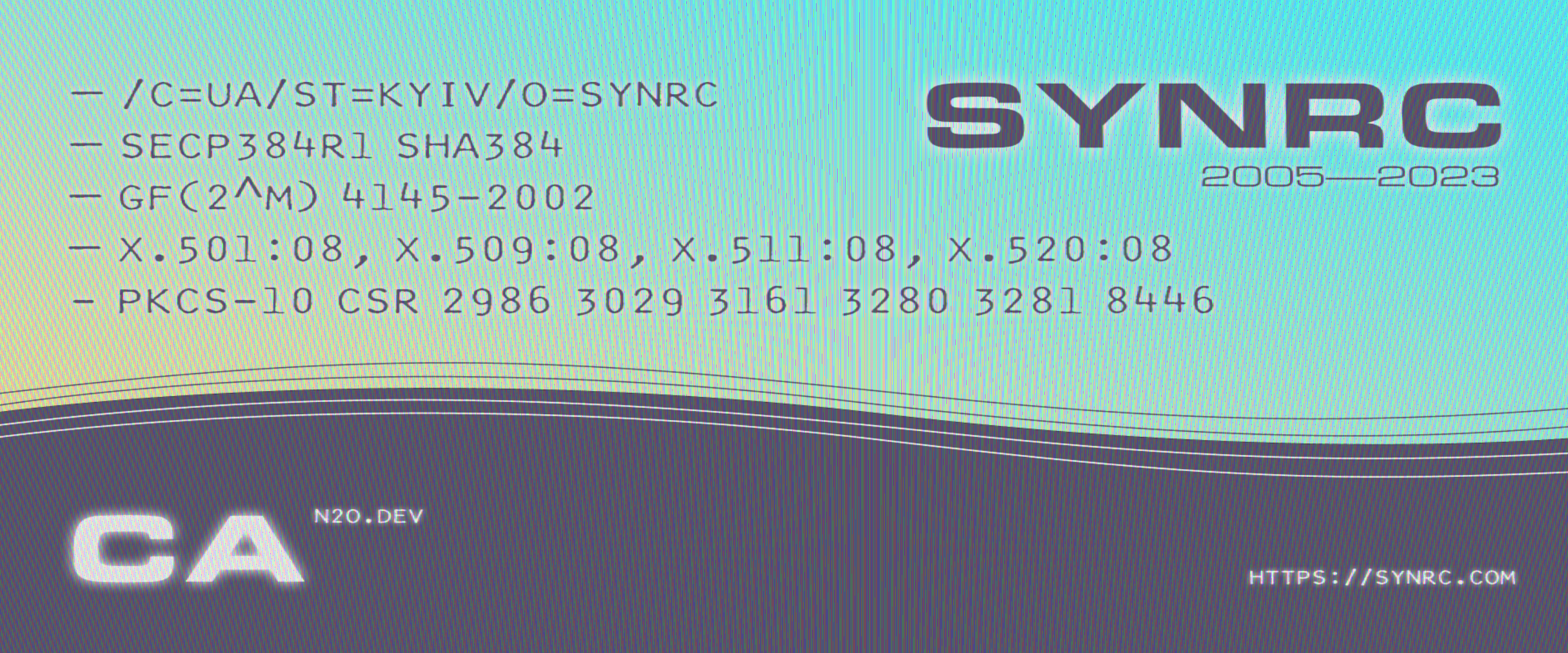INTRO

DEVELOPMENT
* 2010-10-18 LDAP
* 2020-02-03 Qualified Digital Signature
* 2023-06-22 CMS Messenger (Pitch)
* 2023-06-30 CHAT X.509 (Homepage)
* 2023-07-05 CMS S/MIME
* 2023-07-16 CMS Compliance
* 2023-07-20 LDAP Compliance
* 2023-07-25 LDAP 13.7.24 (Homepage)
* 2023-07-30 CA X.509 (Homepage)
* 2023-07-21 CMP/CMC/EST
* 2023-07-21 MLS ROOM CHAT
* 2023-08-05 CA CURVE
* 2023-08-07 CHAT ASN.1
* 2023-08-08 ASN.1 Compiler
* 2023-08-13 SWIFT X.509
* 2023-09-01 ASN1.EX X.680
* 2024-10-29 EST
* 2024-11-17 EUDI
* 2024-11-20 CBOR COSE
* 2024-11-21 MSO MDoc
ARCHITECTURE
EUDI is decetralized PKIX with ABAC level control over attributes that is using JSON as encoding and HTTP as transport.
- ● eIDAS Node — State Certificate Authority
- ● EUDI Verifier — Verifiable Presentations
- ● EUID Wallet (Holder) — iOS/Android Application
- ● EUDI Provider (Issuer) — OpenID for Verifiable Credentials
- ● Personal Identification Data (PID) Provider — Diia State Enterprise
- ● Qualified and Non-Qualified Electronic Attestation of Attributes (QEAA)
- ● Qualifiied Electronic Signature Provider (QP) — Qualified Certificates (QC)
HOLDER, ISSUER, VERIFIER
In an OpenID4VC ecosystem, the Verifier and the Issuer are connected indirectly through the credential lifecycle, with interactions primarily mediated by the Holder. This architecture ensures trust without requiring a direct, continuous relationship between the Verifier and the Issuer, adhering to privacy and decentralization principles. The Verifier does not directly contact the Issuer during typical operations unless a status check is required. The Holder acts as the intermediary, ensuring their privacy and control over the data being shared.
EUDI Wallet acts as Holder, QEAA, EAA, PIP (TSPs) act as EUDI Providers or Issuers. EUDI Verifier perform status verification of credentials and acts as presentations Verifier.
PKIX vs OpenID4VC
EUDI model has a similarity with PKIX. The same way person use a signed attribute set (a X.509 certificate from CSR attributes) for authentication and authorization in PKI, the OpenID4VC provider (PIP) envelops set of attributes (digital presentation of claims) and issue and Electronic Documents in mDOC format for EUDI Wallet.
However, unlike PKIX with its centralized model, EUDI provide distributed model without single root CA, where all parties bounded cryptographycally. Also, EUDI has more subtle and rigorous control over attributes (claims) like in ABAC model.
CRLs and OCSP can create privacy concerns since they involve querying a CA, potentially exposing the user's activity. OpenID4VC mitigates this by enabling the Holder to mediate the process, and some implementations avoid real-time statu checks entirely by including cryptographic proofs within the credential itself.